
Introduction
Amazon FBA: Entrepreneurs have exceptional opportunities to establish profitable online businesses through modern digital environments. Amazon FBA provides one of the strongest foundations available to start online business operations. With over 310 million active customers, Amazon offers a global stage to launch products and build brands, and FBA makes this access easier by handling the toughest parts of e-commerce: warehousing, shipping, and customer service.
The guide details the functions of Amazon FBA and demonstrates its importance while outlining the necessary steps to establish a sustainable online business by 2025.
What is Amazon FBA? (Ultimate Beginner’s Guide)
The fundamental meaning of Amazon FBA stands for “Fulfillment by Amazon.” Amazon FBA provides storage and logistical operations including picking and packing along with shipping capabilities, while managing returns and customer service for third-party sellers.
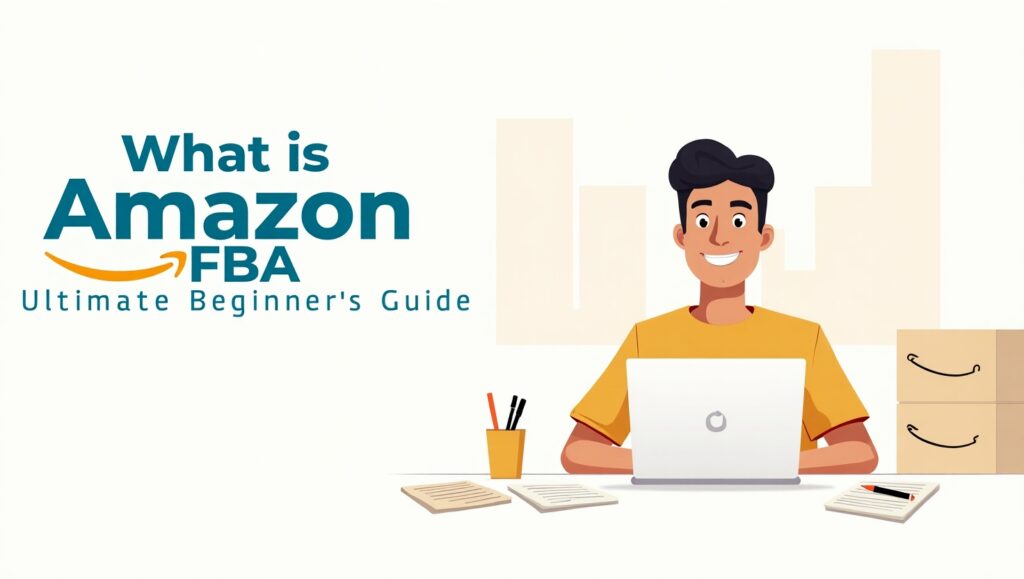
When sellers choose to use Amazon’s FBA service, they transfer their products to Amazon’s fulfillment centers. Amazon keeps its goods stored in vast fulfillment centers that function as warehouses until buyers make their purchases. Amazon handles the order fulfillment process by picking and packing products before shipping them to customers. Amazon handles order-related problems and customer service issues like returns and inquiries to deliver seamless customer service.
FBA service helps sellers avoid the complicated logistics and customer service responsibilities typical in e-commerce operations. Owners of businesses can focus their resources on locating superior products at the same time as they build marketing approaches and establish strong brand identities. Marketplace Pulse discovered that sellers who use FBA experience 20% to 25% sales growth due to better product exposure combined with quicker delivery options and Amazon Prime membership reach.
FBA Amazon Meaning: Unlocking the Secrets of FBA
“FBA Amazon” defines the program through which Amazon oversees fulfillment and shipping tasks for sellers who use its marketplace. Amazon’s respected reputation together with its strong infrastructure system and international distribution network gives the service its strength. The FBA service from Amazon extends beyond simple product fulfillment by providing a complete ecosystem that includes storage solutions and shipping services together with return handling and customer support systems.
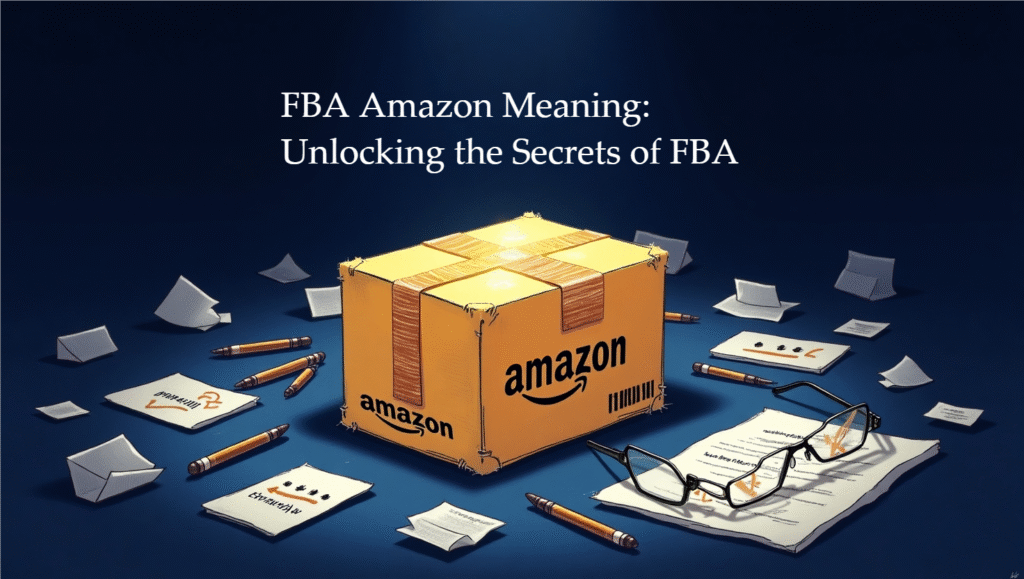
Sellers find the Prime badge as the primary benefit when they choose to enroll in FBA. This Prime badge indicates Amazon’s fast shipping service, which helps draw more customers to sellers’ listings. Amazon’s trusted name provides credibility to the products listed on its platform.
Fulfillment by Amazon provides substantial advantages but requires sellers to pay certain costs. The costs that come with FBA consist of storage fees and fulfillment charges, as well as extra fees for inventory kept in storage beyond normal selling periods. Sellers need to fully grasp these costs to prevent them from reducing their profits.
FBA Means: What You Must Know Before You Start
New sellers selling products through Amazon fail to understand the complete meaning of “FBA means” and only focus on sending their goods to Amazon. Sellers gain access to Amazon’s logistics network and customer support through the service, but need to take on extra responsibilities and pay additional costs themselves.
Amazon’s FBA program requires sellers to strictly adhere to its detailed guidelines, which cover product labeling along with packaging standards and inventory management rules. Sellers must strictly adhere to these requirements because failure to do so may lead to shipment delays or rejections and potential platform suspension.
FBA implements a fee system through storage charges and fulfillment costs, which accumulate quickly without proper management. To prevent incurring long-term storage costs, Amazon charges when products stay in their fulfillment centers too long. Sellers must actively monitor their inventory levels.
Sellers need to be aware that Amazon handles customer service operations for all products stored with FBA. The efficiency benefit for sellers comes at the expense of their ability to manage customer interactions and develop direct customer relationships. Businesses aiming to scale rapidly can find the hands-off approach beneficial.
How Does Amazon FBA Work? (Complete Breakdown)
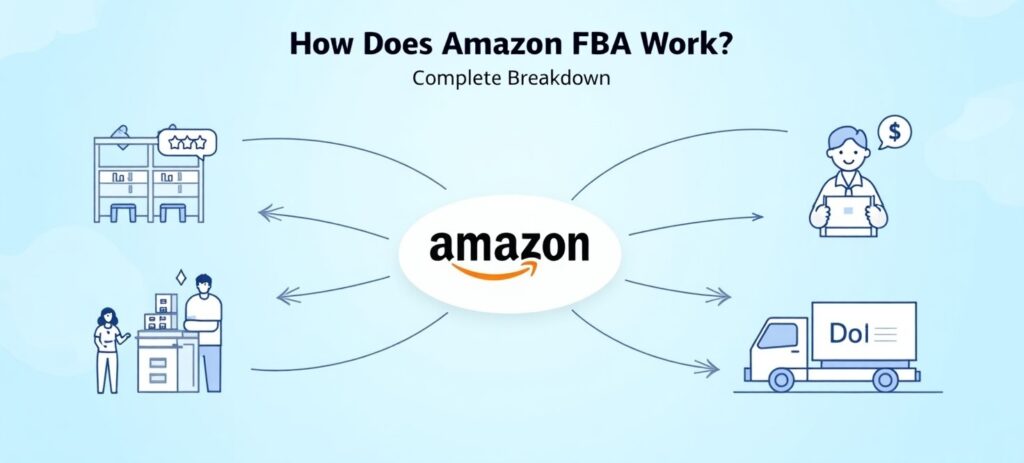
Understanding the Amazon FBA process requires analyzing it through its primary operational steps.
- Create an Amazon Seller Account:
Establish your account credentials and start adding your products to the marketplace. - Market Research:
Jungle Scout and Helium 10 tools enable users to discover products that show strong potential for sales success. - Prepare Your Products for Shipment:
Follow Amazon’s guidelines for labeling and packaging. - Shipping to Amazon Fulfillment Centers:
Store your inventory properly by using Amazon’s inbound shipment management system. - Amazon Handles Orders:
Amazon takes care of the picking, packing, and shipping of items once a customer places an order. - Customer Service and Returns:
Amazon manages both return processes and customer inquiries.
This Step-by-Step Blueprint for Success shows how to start with Amazon FBA.
Starting an Amazon FBA business requires minimal effort, but achieving success demands thorough planning and execution. The following steps outline the essential actions you need to take:
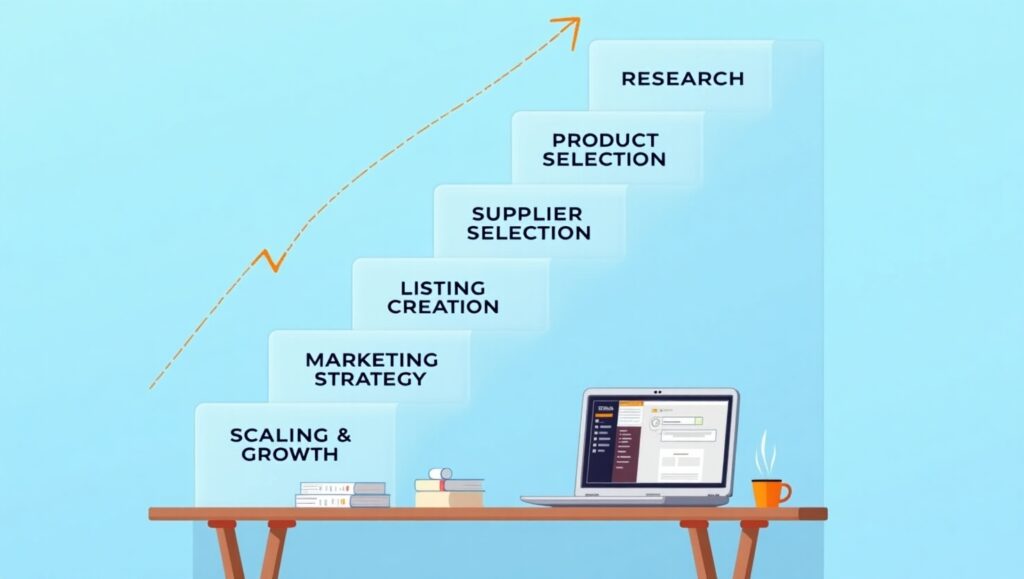
Market Research:
Perform market research on the Amazon marketplace to locate products that show strong demand yet face limited competition before making a selection. Search for items with strong Best Seller Rank (BSR) figures and examine customer reviews to understand their market appeal.
Product Sourcing:
After selecting a product, search for a supplier who can supply it at a low price. Both Alibaba and local manufacturers serve as excellent starting points for product sourcing. Begin by ordering samples to validate product quality before placing a bulk order.
Amazon Seller Registration:
Set up your Amazon Seller Central account. Tax identification information, along with payment details, must be provided when setting up your account.
Branding and Packaging:
Develop a distinctive brand identity for your product to ensure visibility among many competitors in the market. Your brand image will strengthen with custom packaging while your customers will enjoy a better experience.
Listing Optimization:
Create compelling product titles with detailed descriptions and bullet points for your product listings. All your product listings must showcase high-resolution images with clear visibility and detailed descriptions that emphasize both product features and benefits.
Shipping to Amazon:
Pack your products and send them to their assigned Amazon fulfillment centers. Utilizing Amazon’s Inbound Shipment Plan will direct your products to the appropriate Amazon warehouse locations.
Launch and Marketing:
After launching your products live on Amazon, utilize PPC ads and drive external traffic through social media and blogs to boost sales. Use promotional campaigns, including discounted prices and giveaways, to achieve initial sales momentum.
What is FBA? Why It’s the Fastest Way to Sell on Amazon
Fulfillment by Amazon (FBA) goes beyond logistics operations by acting as a platform for business growth acceleration. Fulfillment by Amazon provides access to Amazon’s large infrastructure and customer base without requiring you to run your own warehouses or handle shipping logistics. Amazon’s global fulfillment network lets you reach millions of users who rely on its reliable delivery services to accelerate your business expansion.
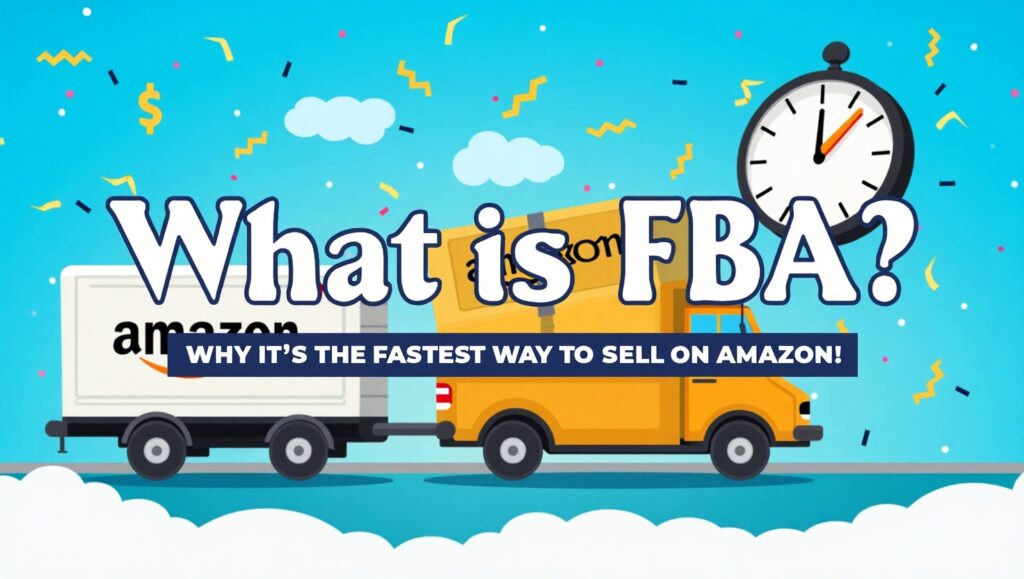
Entrepreneurs often find that FBA provides the quickest route to Amazon sales because it manages all the demanding operational tasks. Business owners can concentrate their energies on product selection while optimizing store listings and increasing customer visits to their online store. New sellers can quickly build traction and credibility through Amazon’s established reputation and widespread fulfillment centers.
What Does FBA Stand For? (And Why It Matters for Sellers)
FBA stands for Fulfillment by Amazon, which is crucial for Amazon sellers to achieve business success. Sellers who use Amazon’s fulfillment centers for inventory management and shipping logistics, along with customer support, can focus their resources on growing their business.
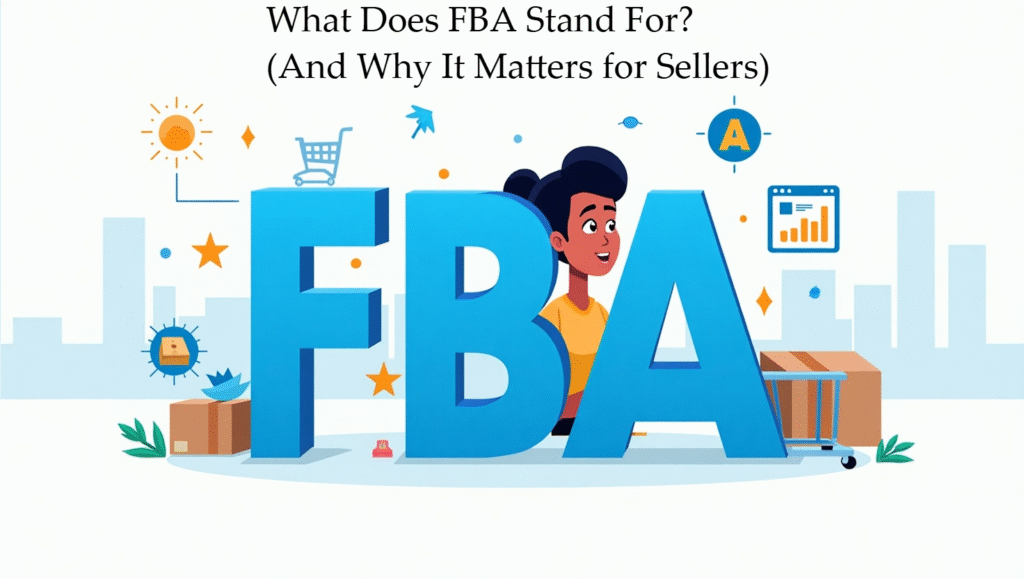
The business model effectively supports entrepreneurs who wish to sell products online without managing logistics operations personally. FBA makes products Prime-eligible, which boosts their visibility and attractiveness to Amazon Prime subscribers.
What is an Amazon Fulfillment Center? Inside Look at Amazon’s Warehouses
The Amazon Fulfillment Centers function as the foundational support structure for the FBA program. Amazon uses its extensive automated warehouses to store products before dispatching them to customers. The arrangement inside fulfillment centers ensures that inventory organization achieves both optimal space utilization and operational efficiency.
Each fulfillment center deploys advanced technology features, including robotic systems, which aid product selection and organization tasks. The setup enables employees to locate products quickly for efficient shipment processes. Amazon’s vast network of fulfillment centers enables sellers to provide products to customers rapidly, with available same-day or two-day shipping options for eligible orders.
Key Differences Between FBA and FBM
| Feature | FBA (Fulfillment by Amazon) | FBM (Fulfilled by Merchant) |
| Storage | Amazon warehouses | Seller’s own facilities |
| Shipping | Amazon ships | Seller ships |
| Customer Service | Handled by Amazon | Handled by Seller |
| Prime Eligibility | Automatic | Requires Seller Fulfilled Prime enrollment |
| Costs | Higher (fees apply) | Lower but more manual work |
Pros and Cons of Using Amazon FBA
Pros:
Amazon FBA provides sellers with competitive benefits through fast shipping capabilities and Prime eligibility while offering access to global markets. Sellers must monitor storage and fulfillment costs closely within Amazon FBA operations to protect their financial results.
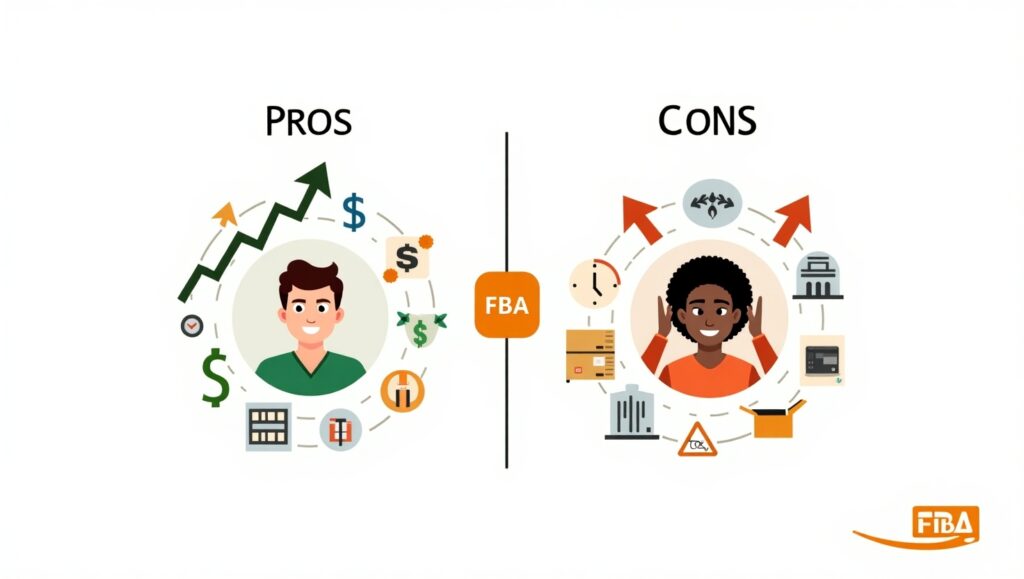
Cons:
Sellers who work with products that have narrow profit margins face substantial challenges from Amazon FBA’s fees and regulatory requirements. Sellers experience restrictions in packaging standards and customer service quality due to Amazon FBA limitations.
Frequently Asked Questions (FAQs)
Is Amazon FBA free to start?
No, Amazon FBA isn’t free. Sellers need to balance their product sourcing costs with Amazon fulfillment center shipping expenses and Amazon’s various storage and fulfillment fees.
After launching products through Amazon FBA, sellers generally see their first sales occur between 30 to 90 days later.
The time for new sellers to make their first product sale generally ranges from 30 to 90 days after launching their products but depends on specific factors such as product niche selection quality standards and chosen marketing strategies.
Can a business operate Amazon FBA services while its operations are based outside of the United States?
Yes, Amazon supports international sellers. International sellers need to handle tax compliance duties such as VAT and U.S. sales tax at the same time as monitoring currency exchange rates and international logistics operations.
How do I avoid long-term storage fees?
Maintaining regular checks on your inventory levels enables you to prevent excessive long-term storage fees. Utilize Amazon’s inventory management tools to monitor slow-moving items and employ promotional offers to decrease old stock levels.
Ready to Build Your Amazon FBA Empire?
While entering the Amazon FBA market presents exciting opportunities, it needs dedicated planning and regular management along with persistent marketing strategies. Implementing the steps in this guide will establish your foundation for success while enabling sales generation on a top-tier e-commerce platform.

